
Petrovaradin: The Gibraltar of the Danube
Explore Petrovaradin in Novi Sad - a historic fortress town offering rich history, vibrant culture, panoramic views, and delectable cuisine along the Danube River.
Petrovaradin, known as the Gibraltar of the Danube, is a must-see destination in Novi Sad, Serbia. This historic neighbourhood is famed for its magnificent fortress which stands proudly on a hill overlooking the Danube River. The fortress, dating back to the 17th century, is a labyrinth of underground tunnels and passages, offering a unique glimpse into the past. Visitors can explore the fortress grounds, enjoy panoramic views of the city, and even visit the Clock Tower, known for its reversed clock hands. Petrovaradin is not just about history; it is a vibrant cultural hub. The neighbourhood hosts the annual EXIT Festival, one of Europe's largest music festivals, attracting visitors from all over the world. The cobblestone streets are lined with art galleries, museums, and charming cafes. The Museum of Contemporary Art and the City Museum of Novi Sad are worth a visit for art and history enthusiasts. Food lovers will also find Petrovaradin delightful. The local cuisine, a blend of Serbian and Hungarian influences, can be enjoyed at various traditional restaurants and bistros. Don’t miss trying the local specialty, fish stew, while enjoying the serene view of the Danube. Petrovaradin is also a great starting point for exploring the surrounding nature. The nearby Fruška Gora National Park offers hiking trails, lush forests, and monasteries that provide a peaceful retreat from the city bustle.
Local tips in Petrovaradin
- Visit the fortress early in the morning or late afternoon to avoid crowds and enjoy cooler temperatures.
- Wear comfortable shoes as the cobblestone streets and fortress grounds require a fair bit of walking.
- Check the schedule for the EXIT Festival if you plan to visit in July; it’s an experience you won't want to miss.
- Try the local fish stew at a riverside restaurant for an authentic culinary experience.
- Bring a camera or smartphone to capture the stunning views from the Clock Tower.
Petrovaradin: The Gibraltar of the Danube
Petrovaradin, known as the Gibraltar of the Danube, is a must-see destination in Novi Sad, Serbia. This historic neighbourhood is famed for its magnificent fortress which stands proudly on a hill overlooking the Danube River. The fortress, dating back to the 17th century, is a labyrinth of underground tunnels and passages, offering a unique glimpse into the past. Visitors can explore the fortress grounds, enjoy panoramic views of the city, and even visit the Clock Tower, known for its reversed clock hands. Petrovaradin is not just about history; it is a vibrant cultural hub. The neighbourhood hosts the annual EXIT Festival, one of Europe's largest music festivals, attracting visitors from all over the world. The cobblestone streets are lined with art galleries, museums, and charming cafes. The Museum of Contemporary Art and the City Museum of Novi Sad are worth a visit for art and history enthusiasts. Food lovers will also find Petrovaradin delightful. The local cuisine, a blend of Serbian and Hungarian influences, can be enjoyed at various traditional restaurants and bistros. Don’t miss trying the local specialty, fish stew, while enjoying the serene view of the Danube. Petrovaradin is also a great starting point for exploring the surrounding nature. The nearby Fruška Gora National Park offers hiking trails, lush forests, and monasteries that provide a peaceful retreat from the city bustle.
Iconic landmarks you can’t miss
Petrovaradin Fortress Clock
Discover the Petrovaradin Fortress Clock, a historical landmark with stunning views, rich history, and unique architecture in Novi Sad.

Petrovaradin Fortress's Clock
Discover the iconic Clock Tower at Petrovaradin Fortress, a historic gem offering stunning views and rich cultural heritage in Novi Sad, Serbia.
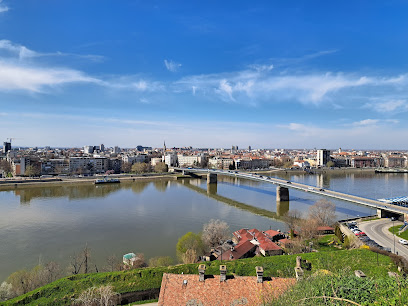
Petrovaradin fortress walls viewpoint
Experience stunning panoramic views and rich history at the Petrovaradin Fortress Walls Viewpoint in Novi Sad, Serbia, a must-visit for every traveler.

Petrovaradin catacombs
Unravel the secrets of the Petrovaradin Catacombs, a captivating local history museum beneath the iconic fortress, rich in culture and adventure.
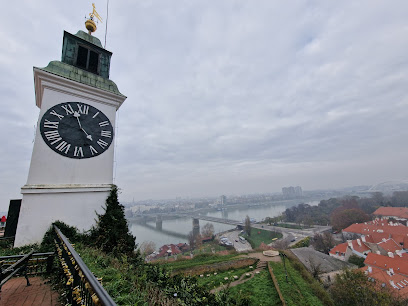
Petrovaradinska tvrđava
Discover the Petrovaradinska Tvrđava: A majestic fortress offering breathtaking views, rich history, and vibrant cultural experiences in Serbia.

Поглед на Нови Сад
Discover breathtaking views of Novi Sad and the Danube River from the stunning observation deck in Petrovaradin, perfect for photography and relaxation.

Gradic
Discover the rich history and stunning views at Gradic, a remarkable historical landmark in Petrovaradin, Serbia, perfect for every traveler.

Стари Петроварадин
Discover the historical allure and breathtaking views of Stari Petrovaradin, a captivating fortress blending rich heritage with vibrant culture in Serbia.

Поглед на Петроварадин
Experience the breathtaking beauty and rich history of Petrovaradin Fortress, a captivating landmark overlooking the Danube River.

PATH to the Fortress
Explore the captivating PATH to the Fortress in Petrovaradin, where history meets breathtaking views along the Danube River.

Стари железнички тунел - улаз од Дунава
Discover the historic Stari Železnički Tunel in Petrovaradin, a stunning architectural marvel showcasing the brilliance of engineering and offering picturesque views of the Danube.

Unmissable attractions to see
Petrovaradin Fortress Clock
Discover the iconic Petrovaradin Fortress Clock in Novi Sad, a historical landmark offering stunning views and a rich cultural experience.
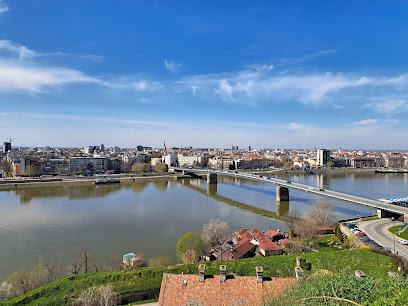
City Museum of Novi Sad
Explore the City Museum of Novi Sad, where history comes alive through captivating exhibitions and rich cultural heritage.

Petrovaradin fortress walls viewpoint
Discover stunning panoramic views and rich history at the Petrovaradin Fortress Walls viewpoint overlooking the majestic Danube River.

Молинаријев парк
Experience the tranquility of Mali Gradski Park, a beautiful green oasis in Petrovaradin perfect for relaxation and leisurely strolls.
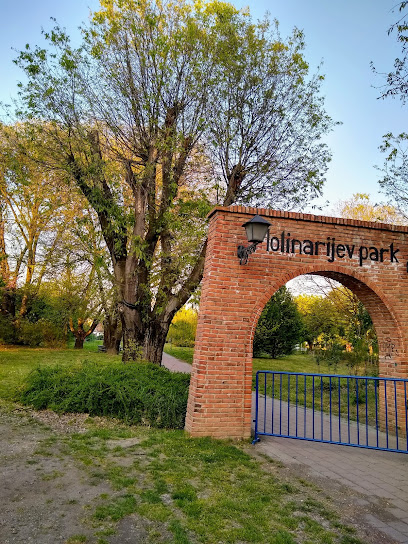
Petrovaradinska tvrđava
Explore the historic Petrovaradinska Tvrđava, a fortress offering stunning views and vibrant cultural experiences in Petrovaradin, Serbia.

Petrovaradin catacombs
Discover the fascinating underground world of Petrovaradin Catacombs, a local history museum housing centuries of secrets and stories.

Поглед на Нови Сад
Discover breathtaking views of Novi Sad from the Petrovaradin Observation Deck, where history meets stunning landscapes.

Панорама Новог Сада
Explore the historic Petrovaradin Fortress, a stunning landmark with breathtaking views and rich cultural heritage in the heart of Novi Sad.

Поглед на Петроварадин
Experience the rich history, stunning views, and vibrant culture of Petrovaradin, a must-visit destination along the Danube River in Serbia.

Тврђавски парк
Discover the tranquil beauty of Tvrđavski Park in Petrovaradin, a perfect blend of nature and history with stunning views of the Danube River.

Essential places to dine
Čarda Aqua Doria
Experience authentic Serbian cuisine with stunning riverside views at Čarda Aqua Doria in Petrovaradin.

Terasa
Discover exquisite cuisine with breathtaking views at Terasa in Petrovaradin – where every meal is an unforgettable experience.

Lazin Salaš
Discover authentic Serbian cuisine at Lazin Salaš in Novi Sad—where tradition meets taste in every delightful dish.

Project 72 Creative Local Cusine
Experience the essence of Novi Sad at Project 72, where creative local cuisine meets soul food traditions for an unforgettable dining adventure.

Балкан Експрес 021
Discover Balkan Expres 021: Where Serbian Flavors Meet Stunning Views Under Petrovaradin Fortress.

Picerija Restoran Square Petrovaradin
Experience authentic Serbian cuisine at Picerija Restoran Square Petrovaradin – where tradition meets flavor in every bite.

Restaurant „Clock”
Discover exquisite dining at Restaurant 'Clock' within Petrovaradin Fortress; enjoy local cuisine with breathtaking views of Novi Sad.

Le Klok Bistro
Experience exquisite flavors at Le Klok Bistro in Petrovaradin – where local cuisine meets modern elegance.

Restoran Karlo Tvrdjava
Discover exquisite Serbian cuisine amidst breathtaking views at Restoran Karlo Tvrdjava within Petrovaradin Fortress.

Restaurant Leopold I
Experience authentic Serbian cuisine at Restaurant Leopold I in Petrovaradin – where tradition meets culinary artistry.

Markets, malls and hidden boutiques
BIG Novi Sad
Experience the best of shopping and dining at BIG Novi Sad, where modern retail meets local charm in the heart of Serbia.

Univerexport Preradovićeva 108a Petrovaradin
Explore local flavors and essentials at Univerexport, the premier supermarket in Petrovaradin, Novi Sad.

Urban Shop
Explore Urban Shop in Novi Sad for trendy footwear and skate gear, perfect for fashion lovers and adventure seekers alike.

Suveniri Souvenirs Novi Sad
Explore Suveniri Souvenirs Novi Sad, your go-to spot for authentic Serbian crafts and unique gifts that capture the spirit of this beautiful city.

BAJUK
Explore BAJUK, Novi Sad's leading fishing store, where expert advice and top-quality gear await all fishing enthusiasts.

Mikromarket
Discover local flavors and essential groceries at Mikromarket, the charming grocery store in the heart of Petrovaradin, Serbia.

Dinero
Explore Dinero in Petrovaradin for unique home goods and local treasures that capture the essence of Serbian craftsmanship.

Jucin dućan
Discover Jucin dućan, a charming gift shop in Novi Sad offering unique souvenirs and scrapbooking supplies that capture the local spirit.

Direct Shop
Discover a treasure trove of beauty products at Direct Shop, a leading cosmetics store in the heart of Petrovaradin.

KvantaLux
Explore unique local products and immerse yourself in the vibrant culture of Petrovaradin at KvantaLux, your go-to shopping destination.
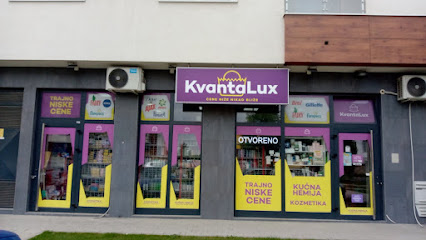
Nika boutique
Explore Nika Boutique in Petrovaradin for unique fashion finds and local artistry, offering a delightful shopping experience for every traveler.

Podunavlje Petrovaradin magacin
Discover the essence of Petrovaradin at Podunavlje Petrovaradin Magacin, where local goods and rich culture come together in a charming store.

BOGICA VOJTEČKI PR, SZTR VOJTEČKI, PETROVARADIN
Explore the unique offerings of BOGICA VOJTEČKI PR in Petrovaradin, a local store showcasing the best of regional crafts and delicacies.

Cvetni Atelier
Discover unique gifts and local craftsmanship at Cvetni Atelier in Petrovaradin, a charming shop filled with artisanal treasures.

Danwel
Explore Danwel in Petrovaradin for authentic local crafts and a unique shopping experience that showcases the heart of Serbian culture.

Essential bars & hidden hideouts
Čarda Aqua Doria
Experience the flavors of Petrovaradin at Čarda Aqua Doria, where local cuisine meets stunning riverside views.

Terasa
Experience stunning views and delectable Serbian cuisine at Terasa, a top dining destination atop Petrovaradin Fortress in Novi Sad.

Shamrock bar
Experience the lively ambiance and delightful drinks at Shamrock Bar in Novi Sad, a must-visit destination for all travelers.

Picerija Restoran Square Petrovaradin
Experience authentic Serbian cuisine at Picerija Restoran Square Petrovaradin, where every meal is a celebration of flavors and hospitality.

Restaurant „Clock”
Delight in the rich flavors and breathtaking views at Restaurant 'Clock' in Petrovaradin Fortress, a perfect blend of history and culinary excellence.

Galerija coffee and food bar
Experience the vibrant culinary scene at Galerija Coffee and Food Bar, where local flavors meet modern dining in Petrovaradin.

Restoran Karlo Tvrdjava
Experience the perfect blend of history and cuisine at Restoran Karlo Tvrdjava in Novi Sad, where every meal is a feast for the senses.

Pop Art Bar Viri Mi Glava
Discover the lively vibes of Pop Art Bar Viri Mi Glava, a must-visit pub in Novi Sad, Serbia, for art lovers and nightlife enthusiasts alike.

Тараба Бар
Discover the lively atmosphere of Тараба Бар in Petrovaradin, a perfect spot for cocktails, local brews, and unforgettable nights out.
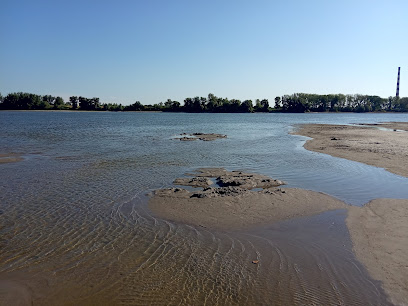
Caffe club Antica
Discover the vibrant nightlife at Caffe Club Antica in Petrovaradin, where cozy ambiance meets friendly faces and great music.

Local Phrases
-
- HelloZdravo
[Zdra-vo] - GoodbyeDoviđenja
[Do-vi-đen-ja] - YesDa
[Da] - NoNe
[Ne] - Please/You're welcomeMolim
[Mo-lim] - Thank youHvala
[Hva-la] - Excuse me/SorryIzvinite
[Iz-vi-ni-te] - How are you?Kako si?
[Ka-ko si?] - Fine. And you?Dobro. A ti?
[Do-bro. A ti?] - Do you speak English?Da li govorite engleski?
[Da li go-vo-ri-te en-gle-ski?] - I don't understandNe razumem
[Ne ra-zu-em]
- HelloZdravo
-
- I'd like to see the menu, pleaseMolio bih meni, molim
[Mo-lio bih me-ni, mo-lim] - I don't eat meatNe jedem meso
[Ne je-dem me-so] - Cheers!Živeli!
[Ži-ve-li] - I would like to pay, pleasePlatio bih, molim
[Pla-ti-o bih, mo-lim]
- I'd like to see the menu, pleaseMolio bih meni, molim
-
- Help!Pomoć!
[Po-moć!] - Go away!Idi odavde!
[I-di o-da-vde!] - Call the Police!Pozovite policiju!
[Po-zo-vi-te po-li-ci-ju!] - Call a doctor!Pozovite lekara!
[Po-zo-vi-te le-ka-ra!] - I'm lostIzgubio sam se
[Iz-gu-bi-o sam se] - I'm illBolestan sam
[Bo-le-stan sam]
- Help!Pomoć!
-
- I'd like to buy...Želeo bih da kupim...
[Že-le-o bih da ku-pim] - I'm just lookingSamo gledam
[Sa-mo gle-dam] - How much is it?Koliko košta?
[Ko-li-ko ko-šta?] - That's too expensiveTo je previše skupo
[To je pre-vi-še sku-po] - Can you lower the price?Možete li spustiti cenu?
[Mo-že-te li spu-sti-ti ce-nu?]
- I'd like to buy...Želeo bih da kupim...
-
- What time is it?Koliko je sati?
[Ko-li-ko je sa-ti?] - It's one o'clockJedan je sat
[Je-dan je sat] - Half past (10)Pola (deset)
[Po-la (de-set)] - MorningJutro
[Ju-tro] - AfternoonPopodne
[Po-po-dne] - EveningVeče
[Ve-če] - YesterdayJuče
[Ju-če] - TodayDanas
[Da-nas] - TomorrowSutra
[Su-tra] - 1Jedan
[Je-dan] - 2Dva
[Dva] - 3Tri
[Tri] - 4Četiri
[Če-ti-ri] - 5Pet
[Pet] - 6Šest
[Šest] - 7Sedam
[Se-dam] - 8Osam
[O-sam] - 9Devet
[De-vet] - 10Deset
[De-set]
- What time is it?Koliko je sati?
-
- Where's a/the...?Gde je...?
[Gde je...?] - What's the address?Koja je adresa?
[Ko-ja je a-dre-sa?] - Can you show me (on the map)?Možete li mi pokazati (na mapi)?
[Mo-že-te li mi po-ka-za-ti (na ma-pi)?] - When's the next (bus)?Kada je sledeći (autobus)?
[Ka-da je sle-de-ći (au-to-bus)?] - A ticket (to ....)Jedna karta (do ...)
[Je-dna kar-ta (do ...)]
- Where's a/the...?Gde je...?
History of Petrovaradin
-
Petrovaradin's history is intrinsically linked to its fortress, which was constructed between 1692 and 1780 to defend against the Ottoman Empire. The fortress, designed by the military engineer Vauban, is renowned for its impressive architecture and strategic location overlooking the Danube River. The site has played a pivotal role in various military conflicts, including the Battle of Petrovaradin in 1716, which was a significant victory for the Habsburgs and marked a turning point in the struggle against Ottoman expansion in Europe.
-
Throughout its history, Petrovaradin has been a melting pot of cultures, influenced by Hungarian, Serbian, and Austrian communities. This diversity is reflected in its architecture, local traditions, and festivals. The annual EXIT festival, held in the fortress, showcases this cultural blend, attracting international artists and visitors, and transforming the historic site into a vibrant hub of music and arts.
-
One of the most iconic symbols of Petrovaradin is its clock tower, built in the 18th century. It features an unusual design with two clock faces; one shows the time and the other indicates the time in the opposite direction, a feature designed to assist sailors on the Danube. The clock tower has become a prominent landmark in Novi Sad, symbolizing the neighborhood's historical significance and maritime heritage.
-
During the 1848-1849 revolutions in Europe, Petrovaradin was a site of significant political activity. The fortress served as a strategic point for revolutionary forces seeking independence from the Habsburg Monarchy. The events of this period contributed to the rise of national consciousness among the Serbs in the region and laid the groundwork for future movements towards autonomy and recognition.
-
In the 20th century, Petrovaradin evolved into an artistic community, attracting writers, painters, and musicians. The establishment of cultural institutions and workshops in the area fostered creativity and innovation. The local art scene continues to thrive today, with galleries and studios dotting the neighborhood, celebrating its rich artistic legacy and contributing to the cultural tapestry of Novi Sad.
Petrovaradin Essentials
-
Petrovaradin is easily accessible from other neighborhoods in Novi Sad. The most common way to reach Petrovaradin is via public transportation. Buses run frequently from the city center to Petrovaradin, with several lines available. Alternatively, you can take a taxi or use rideshare services, which are widely available. For those traveling from Belgrade, you can take a train to Novi Sad and then transfer to a local bus or taxi to reach Petrovaradin.
-
Petrovaradin is a compact neighborhood, making it easy to explore on foot. There are also local bus services that connect different parts of the neighborhood and to the city center. Bicycles can be rented from various shops in Novi Sad, and cycling along the Danube River offers a scenic way to experience the area. Taxis are readily available as well, providing convenient transport options.
-
Petrovaradin is generally safe for tourists, but standard precautions should be taken. Avoid walking alone late at night in poorly lit areas, especially around the outskirts of the neighborhood. While there are no specific high-crime areas targeting tourists, it's advisable to stay aware of your surroundings and keep your belongings secure in crowded places.
-
In case of an emergency, dial 194 for police, 194 for fire services, and 125 for ambulance services in Serbia. The nearest hospital is in Novi Sad's city center. It's also recommended to have travel insurance that covers medical emergencies. Pharmacies are available in Petrovaradin for minor health issues.
-
Fashion: Do dress modestly, especially when visiting historical sites and churches. Avoid overly casual or revealing attire. Religion: Do respect local customs and traditions. When entering churches, dress appropriately and consider covering your head. Public Transport: Do be courteous and give up your seat to elderly passengers. Don’t eat or drink on public transport. Greetings: Do greet locals with a handshake and a smile. Eating & Drinking: Do try local specialties and accept food offerings graciously. Don’t waste food or refuse hospitality, as it may be perceived as impolite.
-
To experience Petrovaradin like a local, explore the Petrovaradin Fortress, where you can find hidden art installations and breathtaking views of the Danube River. Visit the local markets for fresh produce and local delicacies. Engage with residents, who are often friendly and eager to share stories about the neighborhood's rich history. If you're there during the summer, check for local music events or festivals, as Petrovaradin is known for its vibrant cultural scene.
Trending Landmarks in Petrovaradin
Nearby Cities to Petrovaradin
-
Things To Do in Belgrade
-
Things To Do in Pančevo
-
Things To Do in Subotica
-
Things To Do in Smederevo
-
Things To Do in Szeged
-
Things To Do in Tuzla
-
Things To Do in Arad
-
Things To Do in Pecs
-
Things To Do in Kragujevac
-
Things To Do in Kraljevo
-
Things To Do in Kecskemet
-
Things To Do in Sarajevo
-
Things To Do in Zenica
-
Things To Do in Banja Luka
-
Things To Do in Drobeta-Turnu Severin








